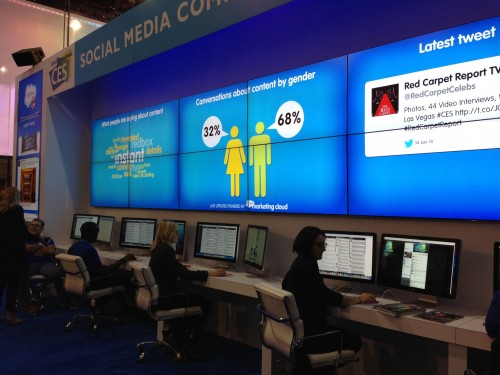Stop reading this post right now if youÂre rolling in cash, have a team of more than 10 people involved in your marketing efforts, or if your social media headquarters looks anything like this:
OK, now that those lucky folks are gone, letÂs talk reality for most of us.
Are you relying solely on Google Alerts to find out what your customers are talking about? Maybe you took it one step further and set up a Hootsuite column to track Twitter mentions. What are you doing with that information as it accumulates?
Welcome to the club.
But we can all take it up several notches this week, by implementing a few simple routines.
Step One – Start Proactively Listening
Use the free tools at your disposal and start seeking out mentions of your brand, your company, and your industry. Both Topsy and Social Mention are great options, and will cover Google+ and Twitter, as well as blogs. I do this task weekly, gathering the resulting information into a spreadsheet.
WhatÂs that you say? No-oneÂs talking about you? Not to worry.
Turn the tables, and evaluate sentiment about your big brand competitors. Find larger companies that are in your industry and see what people are saying about them. Is it positive or negative? You might uncover a great business opportunity, or a competitor weakness by doing this. Bonus: you might discover topic ideas for your blog!
Step Two – Self-Exams Are Useful Too
Particularly if you donÂt have a lot of external social discussion going on yet (maybe you just launched, or you havenÂt gotten traction yet), evaluate the contents of your email feedback or support questions. Analyze whether the questions and reactions youÂre getting from your own customers are positive or negative. Talk to your colleagues and collect some anecdotal evidence if you donÂt have a formal online feedback tool.
Step Three – Act on the Data
Now that you have some indicators of sentiment, get further value out of the exercise by engaging with those who mentioned you. For example, if Topsy revealed a Tweet that gave you a shout-out, you might reply to that person with a thanks. If you found that a certain person has been promoting your content consistently, you might want to reach out and look for some of their content that you can promote.
On the flip side, if you find someone who is unhappy with your services or who has mentioned your company in a negative light, evaluate whether you can address the issue and turn them around. This is one of the strong suits of social media—the ability to capture those negative reviews and the opportunity to respond to them.
Are you doing any sentiment analysis right now? How might you add this data to your marketing tool kit?


